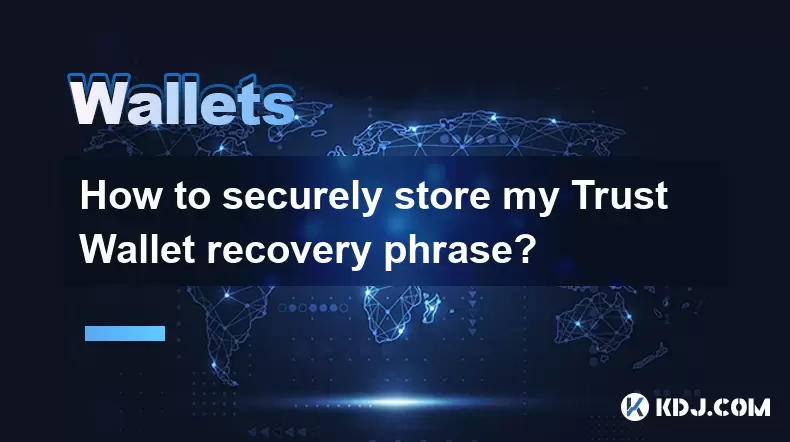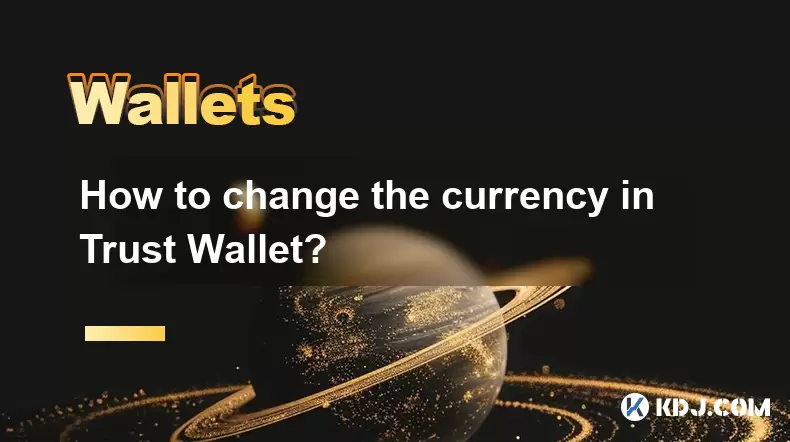-
 Bitcoin
Bitcoin $114200
0.00% -
 Ethereum
Ethereum $3637
0.56% -
 XRP
XRP $2.950
-2.01% -
 Tether USDt
Tether USDt $0.9999
0.02% -
 BNB
BNB $761.0
0.55% -
 Solana
Solana $164.1
-1.38% -
 USDC
USDC $0.9999
0.02% -
 TRON
TRON $0.3332
0.36% -
 Dogecoin
Dogecoin $0.2012
-0.52% -
 Cardano
Cardano $0.7261
-1.41% -
 Hyperliquid
Hyperliquid $37.62
-2.13% -
 Stellar
Stellar $0.3930
-2.65% -
 Sui
Sui $3.441
-0.16% -
 Bitcoin Cash
Bitcoin Cash $563.8
0.70% -
 Chainlink
Chainlink $16.50
0.09% -
 Hedera
Hedera $0.2424
-0.14% -
 Ethena USDe
Ethena USDe $1.001
0.01% -
 Avalanche
Avalanche $22.20
0.00% -
 Litecoin
Litecoin $118.0
-2.48% -
 UNUS SED LEO
UNUS SED LEO $8.991
0.12% -
 Toncoin
Toncoin $3.195
-3.87% -
 Shiba Inu
Shiba Inu $0.00001217
0.12% -
 Uniswap
Uniswap $9.674
-0.21% -
 Polkadot
Polkadot $3.633
1.00% -
 Monero
Monero $295.3
-0.82% -
 Dai
Dai $0.9999
0.00% -
 Bitget Token
Bitget Token $4.321
-0.41% -
 Cronos
Cronos $0.1392
0.73% -
 Pepe
Pepe $0.00001027
-0.89% -
 Aave
Aave $258.5
0.32%
Does Exodus support cross-chain transfers? How to operate?
Exodus supports cross-chain transfers via bridge protocols, allowing users to move assets between blockchains like Ethereum and Binance Smart Chain.
May 03, 2025 at 01:22 pm

Does Exodus support cross-chain transfers? How to operate?
Exodus is a popular cryptocurrency wallet that offers a user-friendly interface for managing a variety of digital assets. One of the key features that users often inquire about is the ability to perform cross-chain transfers. In this article, we will explore whether Exodus supports cross-chain transfers and provide a detailed guide on how to operate these transfers if they are supported.
Understanding Cross-Chain Transfers
Before diving into the specifics of Exodus, it's important to understand what cross-chain transfers are. Cross-chain transfers refer to the process of moving assets from one blockchain to another. This can be crucial for users who want to leverage the benefits of different blockchains, such as faster transaction times or lower fees. Cross-chain transfers can be facilitated through various methods, including atomic swaps, wrapped tokens, and bridge protocols.
Exodus and Cross-Chain Transfers
Exodus does support cross-chain transfers, but the extent of this support can vary depending on the specific cryptocurrencies involved. Exodus primarily supports cross-chain transfers through the use of bridge protocols. For instance, if you want to transfer assets from Ethereum to Binance Smart Chain, Exodus can facilitate this through a bridge service. However, not all cryptocurrencies supported by Exodus are eligible for cross-chain transfers, so it's important to check the compatibility before proceeding.
Preparing for a Cross-Chain Transfer
Before you can perform a cross-chain transfer in Exodus, there are several preparatory steps you need to take. First, ensure that you have both the sending and receiving wallets set up in Exodus. The sending wallet should contain the cryptocurrency you want to transfer, and the receiving wallet should be compatible with the blockchain you are transferring to. Additionally, you may need to have a small amount of the native cryptocurrency of the destination blockchain to cover transaction fees.
Step-by-Step Guide to Performing a Cross-Chain Transfer in Exodus
Here is a detailed guide on how to perform a cross-chain transfer using Exodus:
Open Exodus and Navigate to the Wallet: Launch the Exodus wallet on your device and navigate to the wallet containing the cryptocurrency you wish to transfer.
Select the Asset to Transfer: Click on the asset you want to transfer. For example, if you are transferring ETH to BSC, select your ETH wallet.
Initiate the Transfer: Click on the "Send" button. In the send menu, you will see an option to "Send to a Different Chain" or "Bridge to Another Chain". Click on this option.
Choose the Destination Chain: Select the blockchain you want to transfer your assets to. For instance, if you are transferring from Ethereum to Binance Smart Chain, select BSC.
Enter the Receiving Address: Enter the address of the wallet on the destination chain where you want to receive the transferred assets. Ensure that this address is correct, as transactions cannot be reversed.
Review and Confirm the Transaction: Review the transaction details, including any fees associated with the transfer. Once you are satisfied, confirm the transaction. Exodus will then process the cross-chain transfer through the bridge protocol.
Wait for Confirmation: Cross-chain transfers can take some time to complete, depending on the bridge protocol and the congestion on both blockchains. Wait for the transaction to be confirmed on both the sending and receiving chains.
Common Issues and Troubleshooting
While performing a cross-chain transfer in Exodus is generally straightforward, you may encounter some common issues. One common issue is transaction delays, which can occur due to high network congestion on either the sending or receiving blockchain. If you experience a delay, it's important to wait patiently and check the status of your transaction on a blockchain explorer.
Another potential issue is incorrect receiving addresses. If you enter the wrong address for the destination chain, your assets may be sent to an address you do not control. Always double-check the receiving address before confirming the transaction.
If you encounter any errors during the transfer process, Exodus provides customer support that can assist with troubleshooting. You can reach out to their support team through the app or their website for help with any issues.
Security Considerations
When performing cross-chain transfers, it's crucial to prioritize security. Always use secure internet connections and ensure that your Exodus wallet is protected with a strong password and, if possible, two-factor authentication. Additionally, be wary of phishing attempts and only use official Exodus resources and support channels.
It's also important to keep your private keys and recovery phrases secure. Never share these with anyone, as they can grant access to your funds. If you are transferring large amounts, consider using a hardware wallet in conjunction with Exodus for added security.
Frequently Asked Questions
Q: Can I perform cross-chain transfers for all cryptocurrencies supported by Exodus?
A: No, not all cryptocurrencies supported by Exodus are eligible for cross-chain transfers. The availability of cross-chain transfers depends on the specific cryptocurrencies and the bridge protocols supported by Exodus. Always check the compatibility before attempting a transfer.
Q: Are there any fees associated with cross-chain transfers in Exodus?
A: Yes, cross-chain transfers in Exodus may incur fees. These fees can include bridge protocol fees and network transaction fees on both the sending and receiving blockchains. The exact fees will depend on the specific transfer and the current network conditions.
Q: How long does a cross-chain transfer take in Exodus?
A: The duration of a cross-chain transfer in Exodus can vary. It depends on the bridge protocol used and the congestion on both the sending and receiving blockchains. Transfers can take anywhere from a few minutes to several hours.
Q: Can I cancel a cross-chain transfer once it has been initiated?
A: No, once a cross-chain transfer has been initiated and confirmed, it cannot be canceled. It's important to double-check all transaction details, including the receiving address, before confirming the transfer.
Disclaimer:info@kdj.com
The information provided is not trading advice. kdj.com does not assume any responsibility for any investments made based on the information provided in this article. Cryptocurrencies are highly volatile and it is highly recommended that you invest with caution after thorough research!
If you believe that the content used on this website infringes your copyright, please contact us immediately (info@kdj.com) and we will delete it promptly.
- BONK, PENGU, and Cold Wallet: What's Hot and What's Not in Crypto Right Now
- 2025-08-07 00:30:32
- Mantle Rockets, WeWake Presale: Chasing 100x Potential in Web3
- 2025-08-07 01:13:45
- Solana Price and the Rise of Remittix: Revolutionizing Crypto Payments
- 2025-08-07 01:13:45
- BlockSack (BSACK): The Base Meme Coin Taking Over the Chain
- 2025-08-07 00:30:32
- Ethereum, Transaction Volumes, and SEC Staking: Navigating the Regulatory Landscape
- 2025-08-06 22:30:13
- Crypto, Tokens, and Metrics: Navigating the New Frontier
- 2025-08-06 23:09:22
Related knowledge

How to add TRC20 token to Trust Wallet?
Aug 04,2025 at 11:35am
Understanding TRC20 and Trust Wallet CompatibilityTrust Wallet is a widely used cryptocurrency wallet that supports multiple blockchain networks, incl...

How to securely store my Trust Wallet recovery phrase?
Aug 06,2025 at 07:14am
Understanding the Importance of Your Trust Wallet Recovery PhraseYour Trust Wallet recovery phrase, also known as a seed phrase or mnemonic phrase, is...

How to change the currency in Trust Wallet?
Aug 06,2025 at 07:14pm
Understanding Currency Display in Trust WalletTrust Wallet does not allow users to change the base currency used for valuation in the same way traditi...

Why am I receiving random tokens in my Trust Wallet (dusting attack)?
Aug 06,2025 at 10:57am
What Is a Dusting Attack in the Cryptocurrency Space?A dusting attack occurs when malicious actors send minuscule amounts of cryptocurrency—often frac...

What is a watch-only wallet in Trust Wallet?
Aug 02,2025 at 03:36am
Understanding the Concept of a Watch-Only WalletA watch-only wallet in Trust Wallet allows users to monitor a cryptocurrency address without having ac...

Why can't I connect my Trust Wallet to a DApp?
Aug 04,2025 at 12:00pm
Understanding DApp Connectivity and Trust WalletConnecting your Trust Wallet to a decentralized application (DApp) is a common process in the cryptocu...

How to add TRC20 token to Trust Wallet?
Aug 04,2025 at 11:35am
Understanding TRC20 and Trust Wallet CompatibilityTrust Wallet is a widely used cryptocurrency wallet that supports multiple blockchain networks, incl...

How to securely store my Trust Wallet recovery phrase?
Aug 06,2025 at 07:14am
Understanding the Importance of Your Trust Wallet Recovery PhraseYour Trust Wallet recovery phrase, also known as a seed phrase or mnemonic phrase, is...

How to change the currency in Trust Wallet?
Aug 06,2025 at 07:14pm
Understanding Currency Display in Trust WalletTrust Wallet does not allow users to change the base currency used for valuation in the same way traditi...

Why am I receiving random tokens in my Trust Wallet (dusting attack)?
Aug 06,2025 at 10:57am
What Is a Dusting Attack in the Cryptocurrency Space?A dusting attack occurs when malicious actors send minuscule amounts of cryptocurrency—often frac...

What is a watch-only wallet in Trust Wallet?
Aug 02,2025 at 03:36am
Understanding the Concept of a Watch-Only WalletA watch-only wallet in Trust Wallet allows users to monitor a cryptocurrency address without having ac...

Why can't I connect my Trust Wallet to a DApp?
Aug 04,2025 at 12:00pm
Understanding DApp Connectivity and Trust WalletConnecting your Trust Wallet to a decentralized application (DApp) is a common process in the cryptocu...
See all articles

























































































